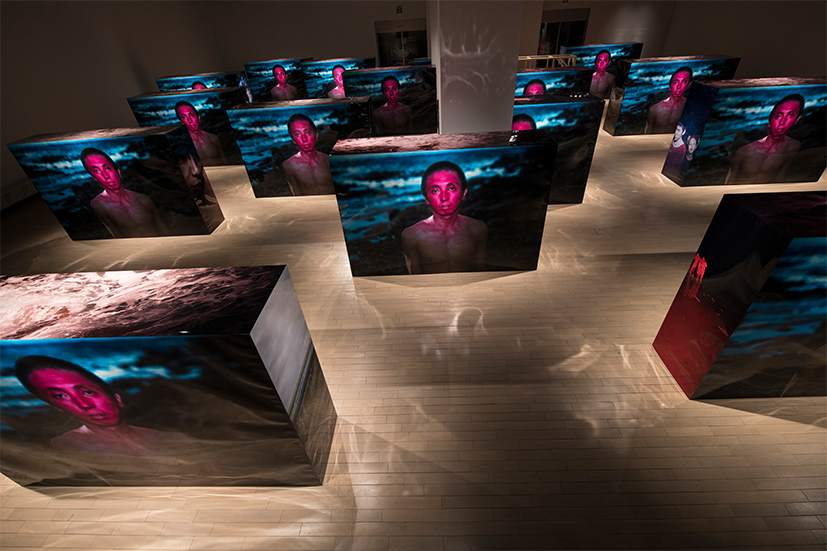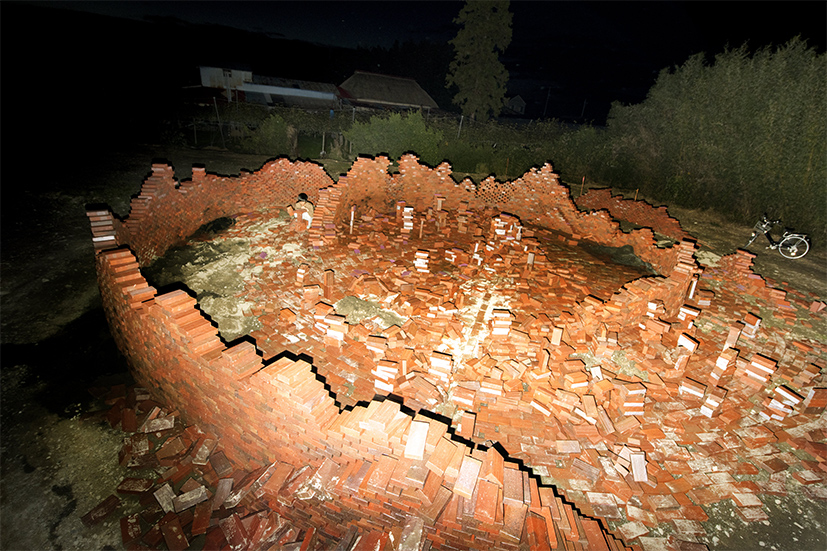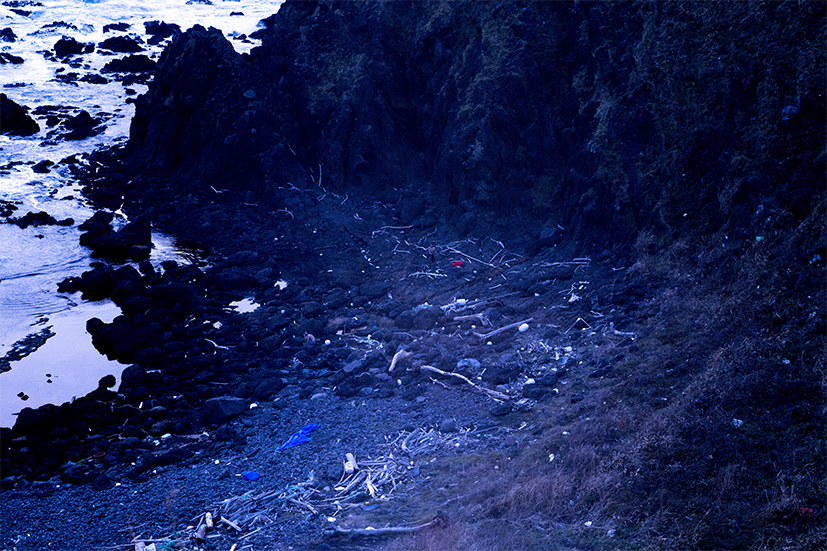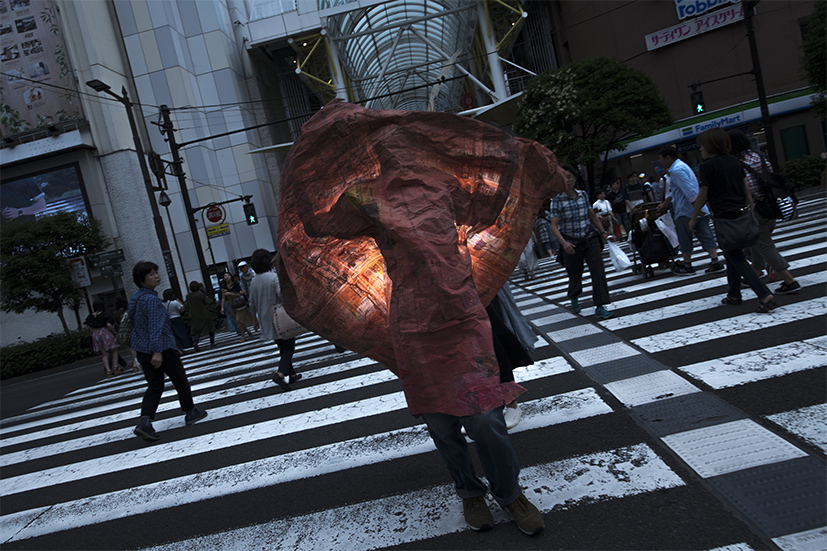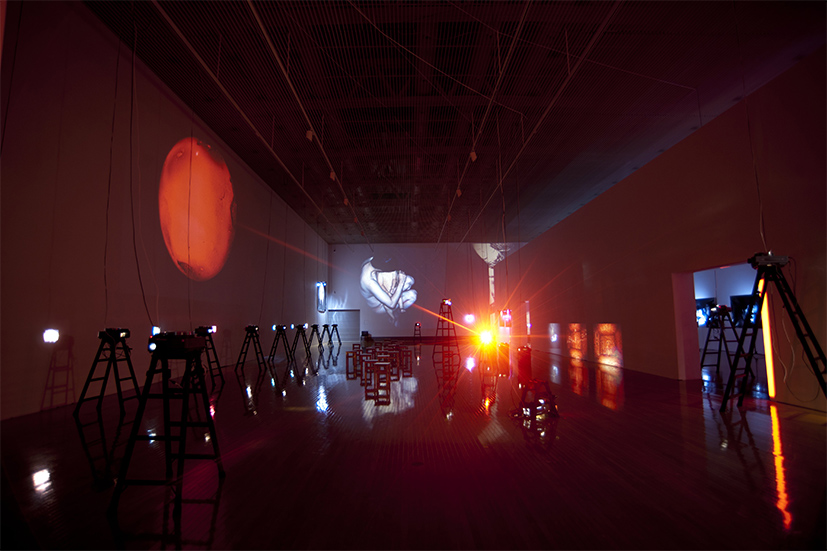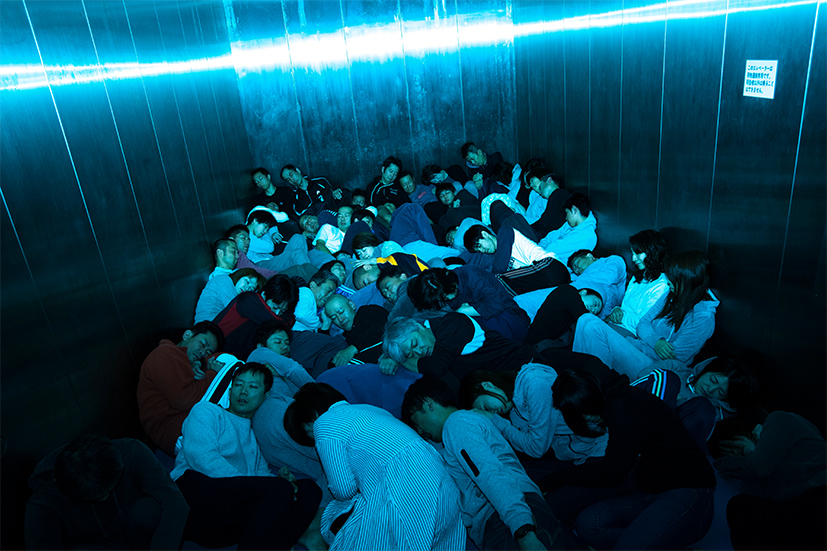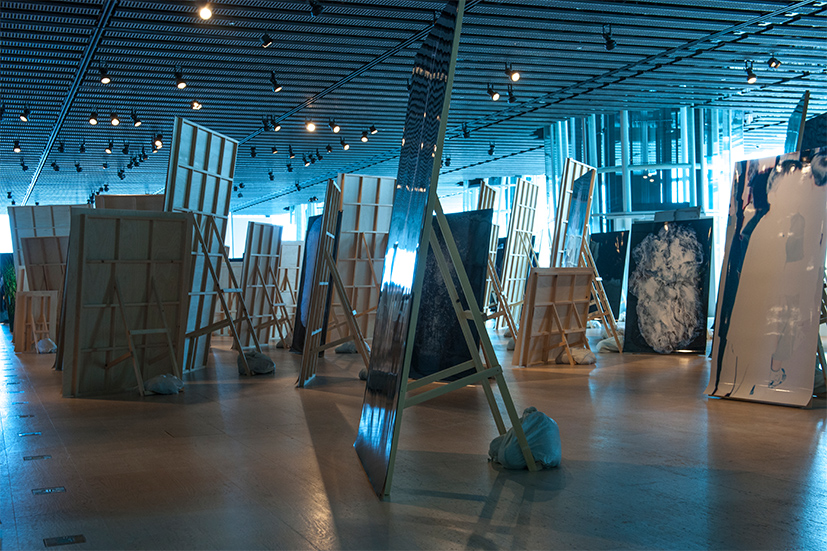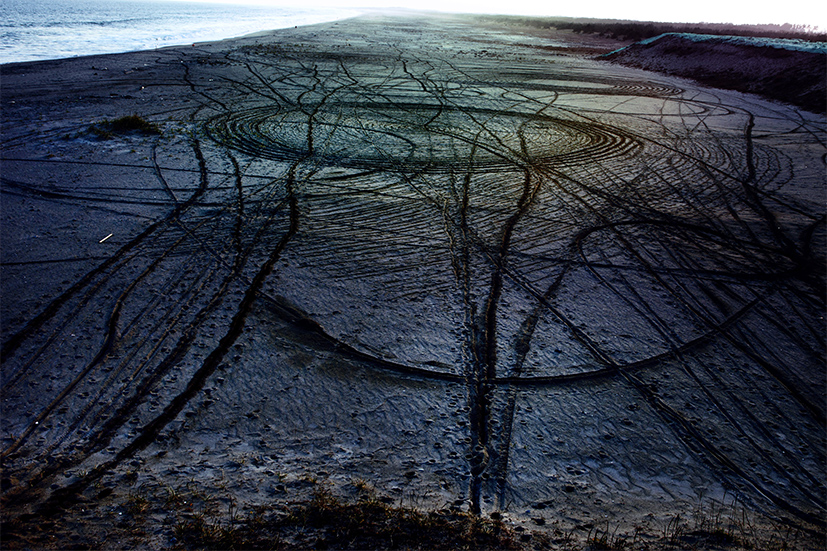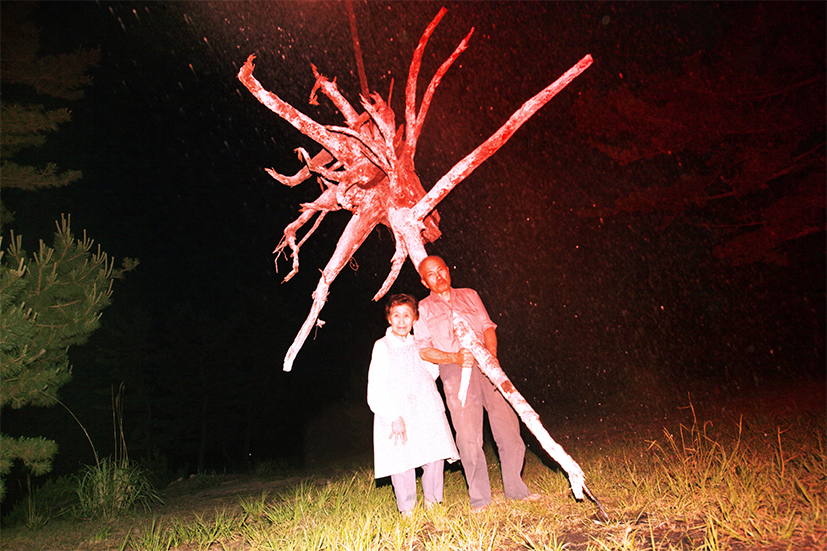Interview with an award winner
TCAA 2021-2023
SHIGA Lieko
Shiga Lieko was born in Ehime Prefecture in 1980. After spending some time in the UK she has earned a high evaluation for her photographic artwork, which pursues the universal activities of humankind through images exuding a unique aura. She moved to Miyagi Prefecture in 2008, and through her encounters with the people who live there and its local color, she continues to use as the material for her creations the relationships between society and nature, thinking about life from the memento mori perspective, and memories going back for generation after generation.
As one of the victims of the 2011 Great East Japan Earthquake, Shiga is one of the rare artists who has actually personally experienced the loss of social functions caused by the tsunami damage to the coastline and the fearsome law of nature. After the earthquake she experienced a sort of “déjà vu” similar to Japan at the end of World War II with the overwhelming spirt of “restoration,” and here creative activities switched course towards a deeper pursuit of the very roots of human mentality.
This Award acclaimed Shiga’s attitude of thoughtfully and earnestly approaching her work and reality, pursuing the equivalence between the media of photography and human mentality, and cross-cutting perspective of the nature of photographs and the human body.
At the Reborn-Art Festival 2021-22 your outdoor exhibition space was dug up just like a wartime trench to make a large-scale installation work using oyster shells, deer horns and other objects. What sort of motivation has driven you since the previous Festival in 2019?
Since I last exhibited there I was able to talk to a deer hunter called Mr. Onodera about the Oshika Peninsula [the Japanese characters for Oshika mean “stag”]. In his activities, at the venison processing facility called Fermento that he runs, the deer that are culled to prevent damage are dissected and the bodies of animals that would ordinarily be stuffed into drum cans and treated as industrial waste are processed as meat for human consumption. That place near Kozumihama in Ishinomaki City is an area soaked by salt water during the tsunami, debris from destroyed houses remains, and the soil is extremely hard to drain. I heard that by mixing in oyster shells the soil could be slightly improved, so with this chance to create an artwork I brought in a vast quantity of oyster shells. Similar to the deer situation, despite oysters being natural creatures they are cultivated at oyster farms and the remaining shells then designated as industrial waste.
As a spin-off plan for the Reborn-Art Festival 2021-22 I started to create a video artwork from more than a year before. I filmed about why biotopes should be created for long-term soil improvements, and what sort of organism cycle this involves. The Oshika Peninsula will see the scheduled restart of the Onagawa Nuclear Power Plant in or after fiscal 2022, Ayukawa Harbor has a whaling station which was switched from research whaling to commercial whaling in 2019, new tide embankments are being constructed, as is an evacuation road called the “restoration road” for the restarting of the Onagawa Nuclear Power Plant, so the situation is changing at a dramatic pace. I exhibited a map so that people can see all these varied changes. This place is around 90 minutes from the studio where I spend my daily life, and the reality that the land of the Oshika Peninsula has taken over is deeply connected to me personally. All the participants have some sort of link to the place, and learning from Mr. Onodera the strong volition to change our own daily lives was one form of motivation.
Your own studio is open to the public on Sundays only, and you are tackling new initiatives such as this and your online radio sessions. Apparently you do not intend it to be a place where people need to be taught anything or go to seek knowledge, but rather a place where just through dropping by they gain something, and you don’t prepare any particular program for visitors.
I have a child in the first grade of elementary school, and even before the COVID-19 crisis it was difficult to go here and there, and I had a sense that there were not many places for the local children to play. I started the open studio with the concept of “doing nothing but studio open” because I thought that if it were me I would be happy to be told that anybody can come in and stay as long as they like. If you provide talks, lectures, workshops and so on then people try to share something and start to behave actively, but I felt that just by spending time in the studio they would be able to share something without having to make any sort of effort at all. A decade following the earthquake disaster the national government, cities, towns and villages have constructed numerous memorial museums. The earthquake disaster served as a catalyst for me to rethink many things too, and I believe that in order to help people realize or think about something creating a quietly open studio is significant as a response ten years after. I hold programs such as online workshops on other days of the week, but on Sundays I open the studio without doing anything. There is a mixture of items placed around the studio and stuck on the walls and it’s a place for passing time together with them, but whether people look at them or not doesn’t really matter.
You stayed in the area and worked there despite the terrible experience of the earthquake disaster. What was the background to your decision to stay?
In the small settlement where I was living, I was given the role of photographer recording its annual activities prior to the earthquake disaster. The settlement became uninhabitable from the day of the earthquake disaster, and I started to live in an evacuation center and then prefabricated housing, but there were so many things that had to be done. The snapshots in the family albums of around 100 household were rescued and collected in a meeting house, but they all had to be washed as the salt water would slowly destroy them if left as they were. This was photography-related work, so I felt I could do it for them. It was extremely distressing to watch the media coverage while in the evacuation center, and some people became depressed. But in my case, I was actually grateful that I had a great deal to do and was able to exercise my body; I just threw myself into my work. While washing the private photographs owned by people that I would not ordinarily be able to look at or touch I came to realize the value and amplitude inherent in photographs. When I saw how everything had been sunk under the tsunami waves, walked among the debris of my settlement while listening to the news of the accident at the Fukushima Daiichi Nuclear Power Plant, I was hit by just what it means when our safe, clean and convenient contemporary society ceases to function. I had since childhood some vague notion of pursuing “freedom,” but I leaned that reaching a state that is near real freedom meant teetering in a state of precariousness. Nevertheless, it filled me with a real sense of being alive. So I think that if I had moved a little way from my settlement and lived in a safe place I might have ended up broken down mentally. I imagine that learning information about my settlement only through the images on the TV, Internet or newspapers would have resulted in just the information piling up on top of me and putting me in a really painful situation. Having experienced a moment when social functions break down made me want to know more about what exactly the modern day is, and think about expression with my own body.
In a previous interview you said “There was a high degree of affinity between the camera and me, a person who had been brought up in a safe, clean and convenient environment, in terms of violence.” Having so said, what is your motivation for your creative activities using the camera as your tool to approach photography?
It’s a common story for a teenage adolescent to feel anger at the reality that isn’t going as they want, to feel uncomfortable about the changes in their body, to feel they don’t belong anywhere. Taking up a camera and slightly altering the reality before me it looked a little better. Believing that to be my own reality I became addicted to those false images and that violence. Using the media to concentrate on and gain pleasure from a world in which the reality before one’s eyes is manipulated and photographed to look as one wishes – I think this is such as dangerous act. When I realized that such images could become artworks I was shocked. What a pack of lies! I thought. That act is pleasurable and so there is no end to how can be photographed. But if you are in a state of addiction to this act of pleasure it doesn’t matter how many photographs you take, just one or one hundred, you won’t learn anything, and nothing will change. When I started to feel that this was unpleasant I tried to control my approach. At the same time I noticed an unpredicted and almost imperceptible “noise” in my photos. It was very trivial, but I saw it as a reality that had crept into my photographs. I started to face up to the peculiarities of photography as a media in which rather than what you try to photograph it is the unintended images that express reality. With regard to photographs that have a profound link with reality, I continue to feel drawn in with a sort of sense of trial and error or gamekeeper turned poacher.
Your work even before the earthquake disaster was deeply tinted with a sense of death, and I have felt something in it like fear. As your very life itself transforms as an artist who grew up in a city, I feel that your work is consistently focusing on death.
I think that too is one facet of the peculiarities of photography as a media. Photographs don’t come out in the way that you see them through the viewfinder. There is always something there you cannot see with your eyes. It’s the same with portraits of the deceased; on one hand they can be treated by families like some part of the body of that person, and on another hand they can be a media that feels as though they are for confirming the absent presence of some distant, unknown relative. The fact that photographs are connotative of death is something that I think one inevitably arrives at upon the pursuit of the peculiarities of photography as a media.
I think that what lies in your work is something denser than individual death, brought to light as being cheek to jowl with the act of living. Looking at your “Human Spring” exhibition at the Tokyo Photographic Art Museum I felt that the photographs condensed all your work thus far, and that death was about to pounce.
“Human Spring” was made as though to bring in the things that we probably can’t see in front of the tripods we set up, the things that are impossible for humans to control. I was questioning how to bring before my camera lens things like anxiety and fear, the power of impulse and so on. It was like staging a performance to capture in an instant what the subject performs while thinking about it in great detail. This probably incorporated things that we obviously cannot feel, so maybe that aroused a sense of death.
The screening of the TCAA took place in the midst of the ongoing COVID-19 crisis like last year. Was there anything particularly difficult or about which you had to be inventive in the course of making a presentation from a remote location?
Some of the screening committee actually came to my studio, for which I was grateful. I’m always here without giving it much thought but I think it’s essential sometimes to change the way I spend my time in this unnecessarily large studio with all sorts of things lying around it, and talk to people while choosing my words carefully. Above all, I wanted to share it with those conducting the screening. I also felt that I wanted to ask other people in the same field of the arts about the things I myself am currently considering. Sofía-san, one of the screening committee members, asked me about [my thoughts] “as a survivor,” but I don’t think of myself as a survivor at all, and those sort of differences in sensibility and being questioned led me to rethink things anew.
What do you hope to do with the activities support funds that come with the prize?
During the screening I mentioned that as I have a six-year-old child and cannot go out much, letting people into my studio and talking to them there is a sort of research. Ten years after the earthquake disaster I’m still anxious about and struggling with all sorts of things, and I thought it would be good if I could go and do some research on other examples of restoration after earthquake disasters around the world. But first of all, before that I want to thoroughly research and make sense of what is going on here in Tohoku. The open studio is something that I had wanted to do for a long time. I think that perhaps for people without a place where they belong, what helps them most of all is not “teaching” but an open door, a space that they can just hang out in. I think that finding a place where you belong is quite difficult. It’s good to have a place on another level, not somewhere that you have to pay money to be there. I’m currently hoping that I can make the exhibition venue and open studio function in all sorts pf phases and on all sorts of levels. The sort of words exchanged there, how perceptions of reality change – I think that the significance of exhibiting itself lies in how people’s perceptions have altered.
The interests of Shiga, one who personally experienced the “restoration” following the Great East Japan Earthquake, have moved towards death and loss or absence, restrictions and freedom, the way of human society in the natural world, and places of serenity for people. It is to be hoped that the open studio she is conducting, a place where anybody can just walk into, will also function as a place that makes people plainly think about the circumstances of others who have been mentally oppressed by the modern social system and struggled with the tremendous difficulty of living.
interview, text: SUMIYOSHI Chie
